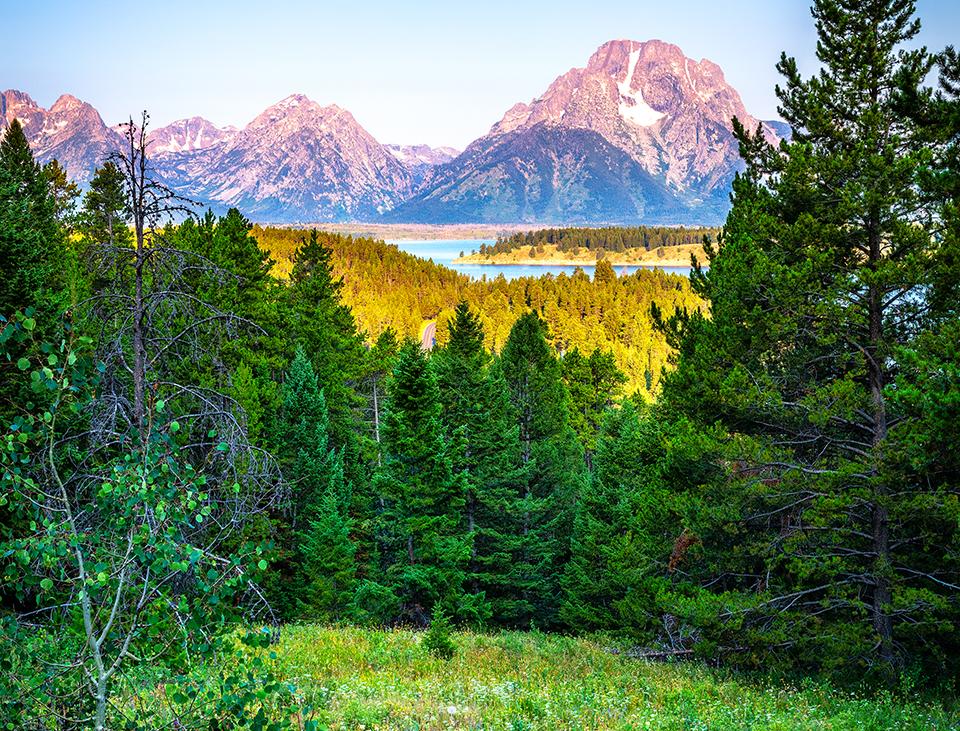
A Signal Mountain summit view of the Tetons, Grand Teton National Park / Rebecca Latson
The Traveler is fortunate to have a number of park friends groups and cooperating associations that help support our coverage of the National Park System. These groups understand the importance of the Traveler’s mission. One such group is the Grand Teton National Park Foundation, “a private, nonprofit organization that funds projects that enhance Grand Teton National Park’s cultural, historic, and natural resources and helps others learn about and protect all that is special in the park.”
This quiz and trivia piece #20: “The Grand Teton Edition,” is a way of saying thank you to the GTNPF. For those of you who have visited this national park with its stunning backdrop of jagged mountain peaks, see just how much you know. For those of you who have yet to visit the Tetons, what you learn from this quiz and trivia piece should convince you to put this national park on your bucket list of places to see.
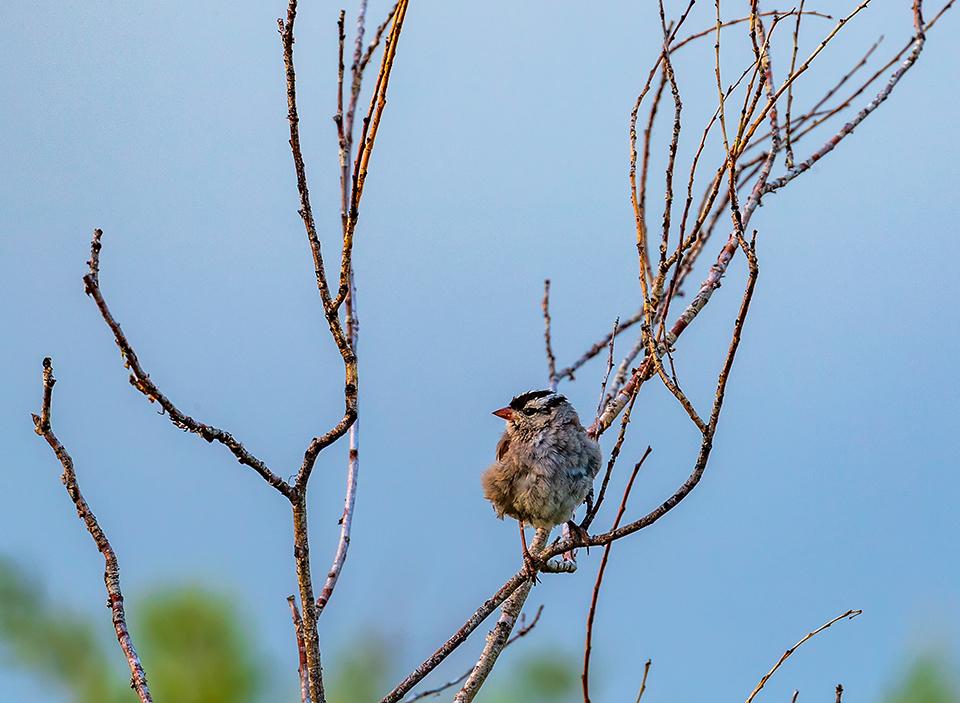
All fluffed up on a chilly summer morning, Grand Teton National Park / Rebecca Latson
1. Grand Teton National Park is a wonderful location for birdwatching, from pelicans cruising the Snake River to grouse strutting their stuff. How many species of birds are there in this park?
a) 96
b) 175
c) 239
d) 300
2. True or False: There are no species of venomous snakes in Grand Teton National Park.
a) True
b) False
3. The earliest evidence of humans in the park dates back at least ____ years.
a) 8,000
b) 9,000
c) 10,000
d) 11,000
4. What movie starring Henry Fonda was filmed in the park in 1963?
a) The Big Sky
b) Spencer’s Mountain
c) The Big Trail
d) Bad Bascomb
5. I am a tall, slender tree that belongs to the pine family. My needles grow in packets of two. I depend on fire to reproduce. My serotinous cones only open to release their seeds after a fire has burned and heated them. Who am I?
a) Whitebark pine
b) Limber pine
c) Lodgepole pine
d) Bristlecone pine
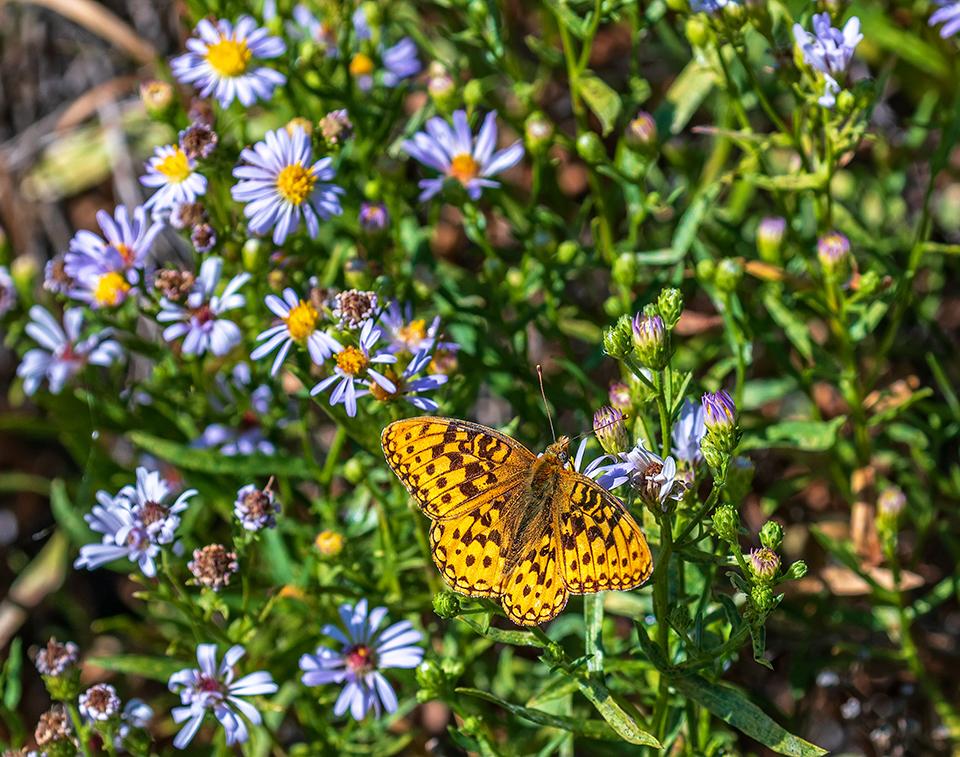
A fritillary in the wildflowers, Grand Teton National Park / Rebecca Latson
6. Grand Teton can be separated into three distinct zones in which wildflowers grow: the forest floor, the alpine zone, and ___
a) the sagebrush valley
b) the interior lowland
c) the wetlands
d) the bog zone
7. How many active glaciers are there in Grand Teton National Park?
a) 7
b) 11
c) 15
d) 17
8. What is the official flower of Grand Teton National Park?
a) Indian paintbrush
b) Alpine forget-me-not
c) Skyrocket gilia
d) Calypso orchid
9. How many species of amphibians call Grand Teton National Park their home?
a) Four
b) Six
c) Eight
d) Eleven

Sunrise over Grand Teton Peak, Grand Teton National Park / Rebecca Latson
10. True of False: The Grand Teton is the tallest peak in Wyoming.
a) True
b) False
Trivia

Colter Bay in June, Grand Teton National Park / NPS-Tobiason
Here’s a little bit of lodging trivia for you, taken directly from “The Complete Guide to The National Park Lodges,” by David L. Scott and Kay W. Scott:
“Most buildings at Colter Bay Village were moved here from other locations around the Jackson Hole area. At one time, Jackson Hole had many small dude ranches and tourist resorts, typically consisting of a central lodge building and five to 30 log cabins. After Grand Teton National Park was expanded in 1950 with a gift of 34,000 acres from John D. Rockefeller, Jr., most of the old lodges were closed and many of the cabins were moved via flatbed truck to Colter Bay, where the cabins were modernized with new roofs, electricity, and plumbing.”
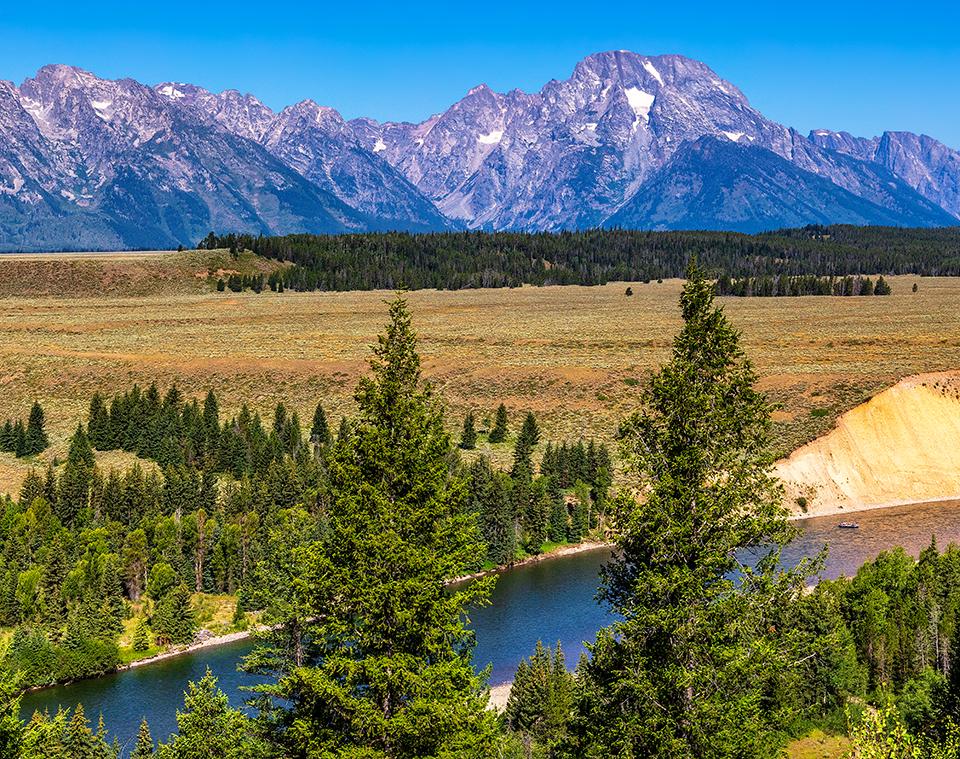
A little raft, the Snake River, and some very tall mountains, Grand Teton National Park / Rebecca Latson
While tourism is a huge (paying) draw to the park and nearby Jackson Hole, back in the 1940s locals were outraged that President Franklin D. Roosevelt had turned to The Antiquities Act to create Jackson Hole National Monument, which placed 221,610 acres of land east of Grand Teton National Park under National Park Service control. In protest, the locals drove 500 cattle across the monument. The dispute was finally settled in 1950, after the economy in Jackson Hole began to improve due to tourism to the new monument; anti-park feelings began to disappear and the monument, park, and John D. Rockefeller, Jr.’s donation of properties to the park were merged to form today’s Grand Teton National Park.

Grizzly bear in the snow, Grand Teton National Park / NPS-Adams
“Grand Teton National Park's 310,000 acres lie at the heart of the Greater Yellowstone Ecosystem. The Greater Yellowstone Ecosystem encompasses over twenty million acres and is considered one of the few remaining, nearly intact, temperate ecosystems on Earth. The animals inhabiting Grand Teton National Park depend on this vast area for survival, residing in and migrating to different areas depending on the season.”
“The Greater Yellowstone Inventory and Monitoring Network (GRYN) is one of 32 NPS inventory and monitoring networks created to provide oversight, planning, and consistency in monitoring the long-term health of the nation's parks. The parks of the GRYN include Yellowstone National Park, Grand Teton National Park, John D. Rockefeller, Jr. Memorial Parkway, and Bighorn Canyon National Recreation Area.” To read more about the GRYN, click here.
Quiz Answers
1d
Over 300 species of birds have been sighted in Grand Teton National Park. To learn more about the birds in this park, click here.
2a True
There are three species of snakes living in the park: the wandering garter snake, the valley garter snake, and the rubber boa. None of these snakes is venomous. To read more about the reptiles in this park, click here.
3d
“People first ventured into this valley as glaciers receded. The earliest evidence of humans in this area dates back at least 11,000 years. By the time Europeans arrived, tribes such as the Shoshone, Bannock, Blackfoot, Crow, Flathead, Gros Ventre, Nez Perce and others were harvesting the valley’s seasonal riches. Native people came to hunt animals, gather plants and collect rocks and minerals. These mountains also held spiritual meaning for American Indians, a connection that endures today.” To read more about American Indians as well as park archeology, click here.
4b
Spencer’s Mountain, starring Henry Fonda, was filmed in parts of Grand Teton National Park and Jackson Hole.
5c
“Lodgepole pines inhabit areas that are periodically burned by forest fires. Their specially-designed serotinous (seed release occurring in response to an environmental trigger, rather than spontaneously at seed maturation) cones open only when heated by fire causing them to drop a huge number of seeds on the newly sunlit and fertile post-fire soil.” To read more about Grand Teton’s trees and shrubs, click here.
6a
Grand Teton National Park can be separated into three distinct zones: the sagebrush valley, the forest floor, and the alpine zone. Skyrocket gilia, larkspur, and indian paintbrush bloom in the valley as temperatures rise. Flowers like fireweed, columbine, monkshood, and the rare calypso orchid enjoy the moist environments found in forests. The flowers of the alpine zone grow close to the ground and the flowers are very small; examples include moss campion, alpine forget-me-not, and sky pilot. To read more about wildflowers in the park, click here.
7b
“Today, there are up to 11 active glaciers in Grand Teton National Park. Ten glaciers have been previously named on U.S. Geological Survey maps: Teton, Middle Teton, Teepee, Schoolroom, Petersen, Falling Ice, Skillet, and East, Middle, and West Triple glaciers. In addition, there is another unnamed glacier near Glacier Peak. However, some of these glaciers may have lost so much ice volume that they have stopped flowing and are no longer active glaciers.” To learn more about glaciers and glacial features within this park, click here.
8b
While the Indian paintbrush is the official flower of the state of Wyoming, the alpine forget-me-not is the official flower of Grand Teton National Park. Indian paintbrush can be found on many of the valley lake hikes in the park, but you must hike to higher elevations in order to find the small Alpine Forget-me-nots.
9b
“The park is home to six species of amphibians: spotted frogs, boreal chorus frogs, boreal toads, tiger salamanders, northern leopard frogs (possibly extinct in the area) and bullfrogs (introduced just outside the park).” To read more about Grand Teton’s amphibians, click here.
10b False
Grand Teton reaches a lofty 13,775 feet above sea level, but Gannett Peak in the Wind River Range is taller by a mere 29 feet. Note: I had a difficult time trying to find consistent elevations for these two peaks. The 13,775 elevation for Grand Teton comes from the NPS site for this park, and the 13,804 elevation is listed as such on five different websites, so I stuck with that number.
References
Michael Joseph Oswald, Your Guide to the National Parks, 2017, Stone Road Press
David L. Scott and Kay W. Scott, The Complete Guide to The National Park Lodges, 8th Edition, Globe Pequot, 2015
Charlie Craighead, Grand Teton Trivia, Riverbend Publishing, 2009
https://livingnewdeal.org/us/wy/grand-teton-national-park/
https://www.softschools.com/facts/national_parks/grand_teton_national_park_facts/2852/


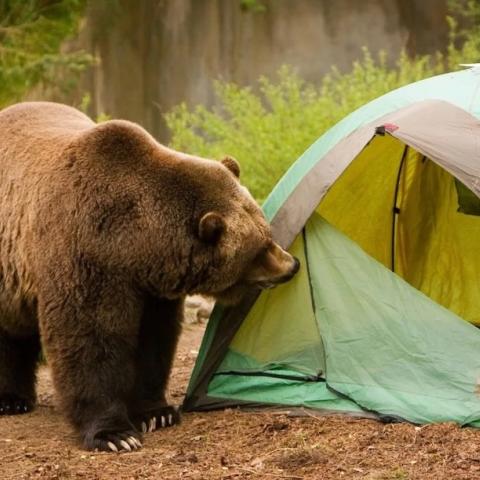

 Support Essential Coverage of Essential Places
Support Essential Coverage of Essential Places







Comments
Another fun one with more of Rebecca's excellent photos!! Thanks.